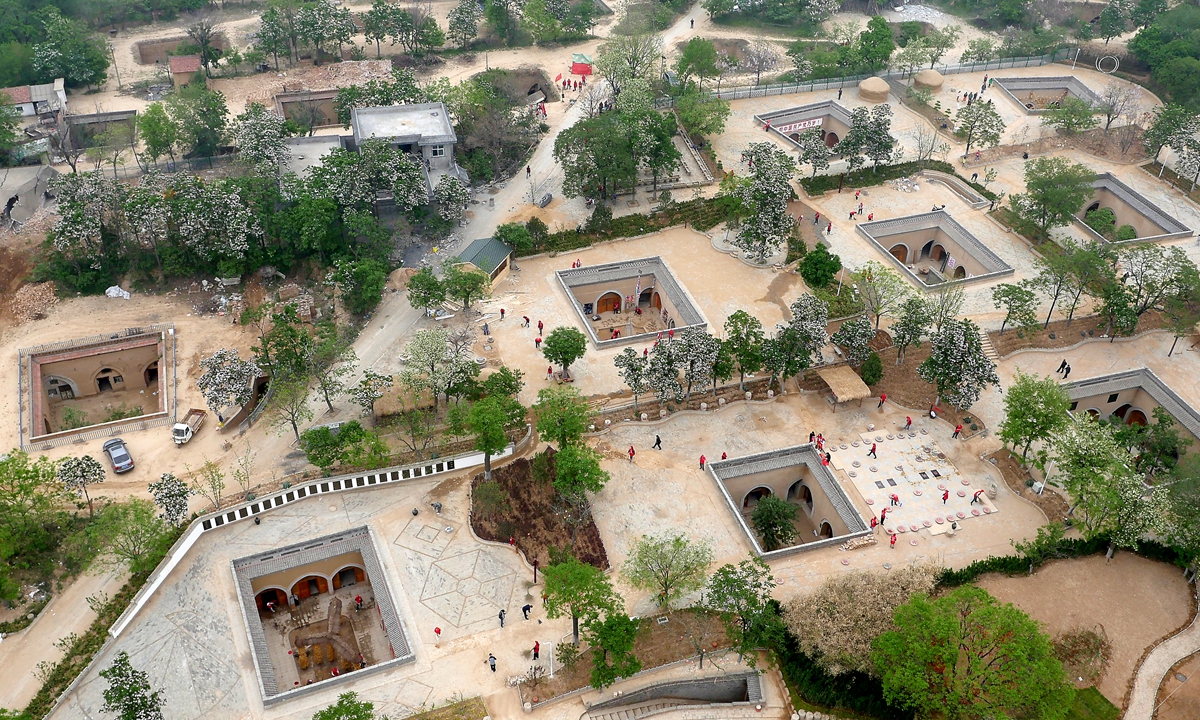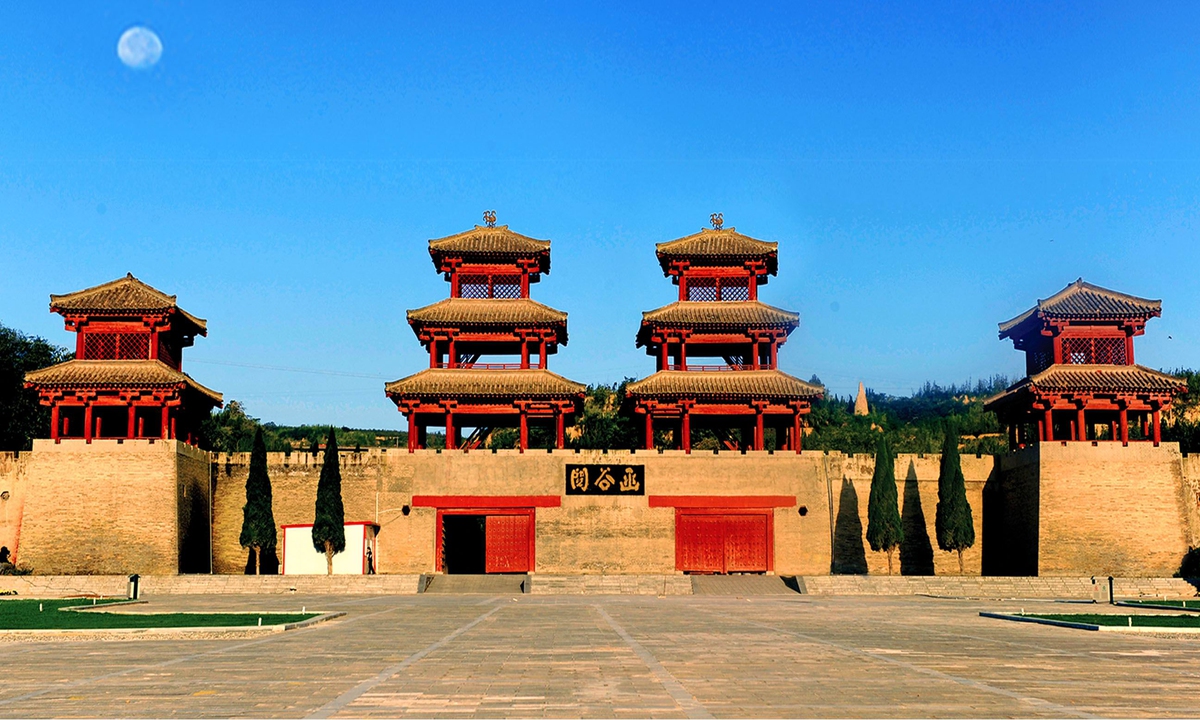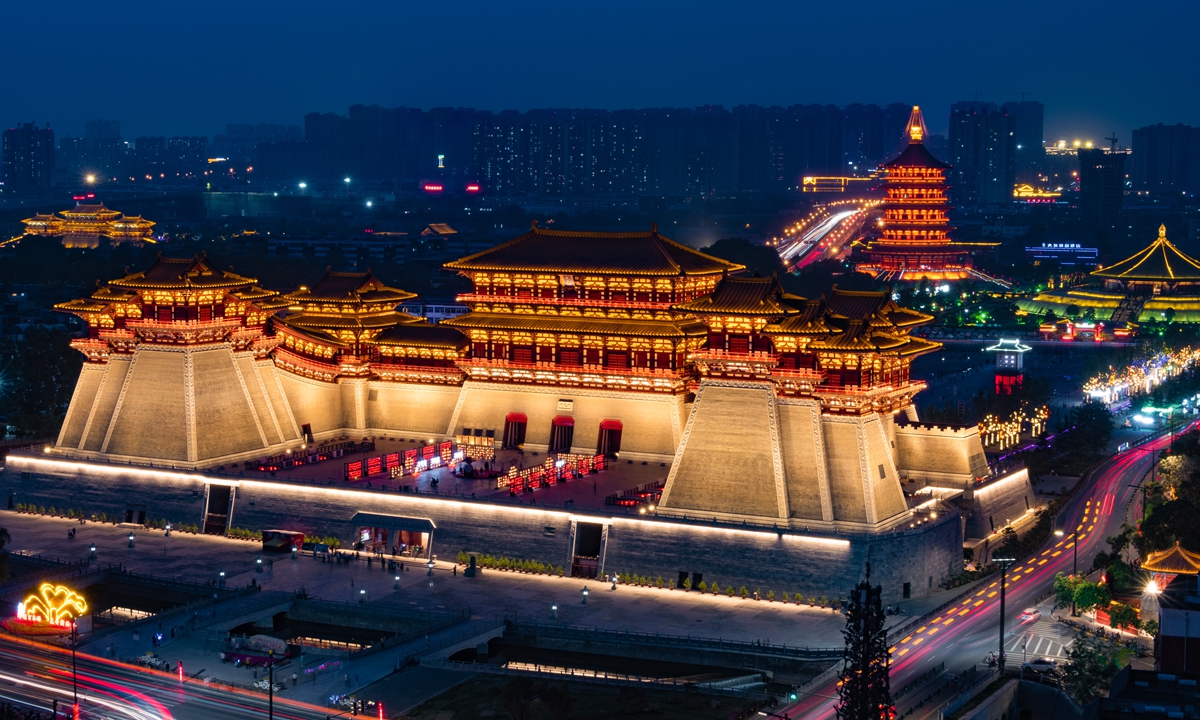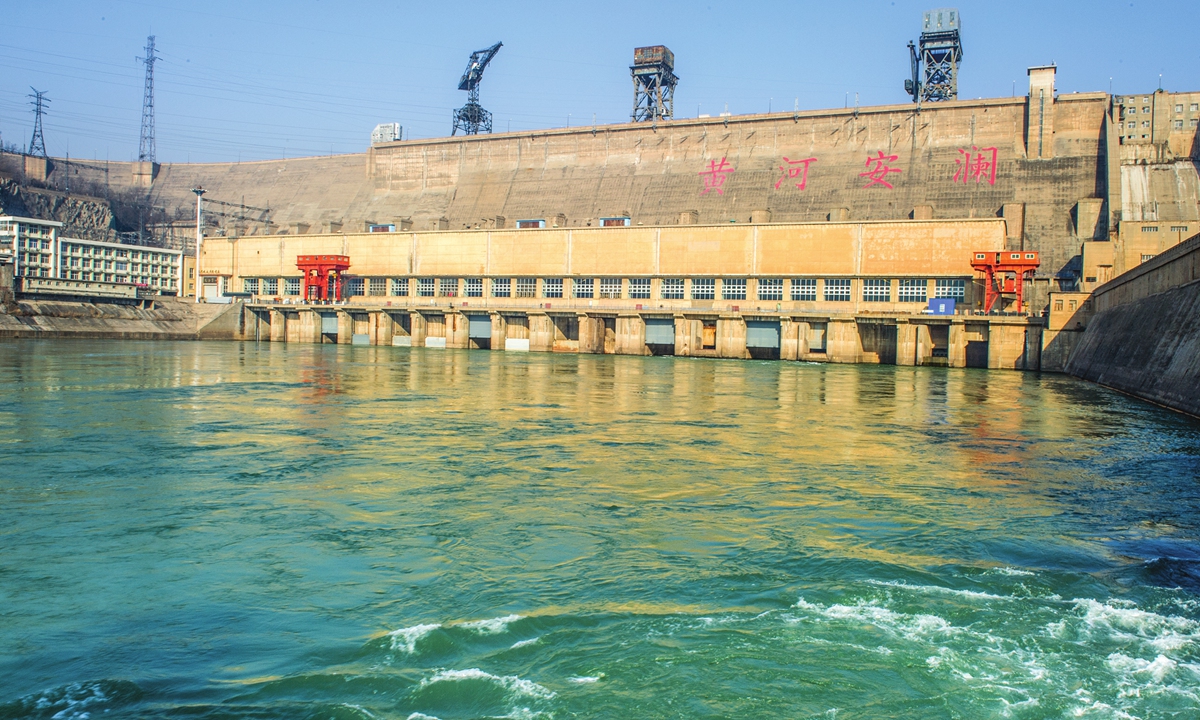Editor's Note:
In China, the Yellow River is often referred to as the "Mother River" as some of the nation's earliest civilizations sprung up along her banks. As the eras passed, certain regions along the Yellow River became major cultural and political centers at various times, such as Luoyang in Central China's Henan Province, which served as the capital for 13 dynasties.
Diverse architectural culture developed as these regions prospered. Imperial structures, including palaces and gates, are usually what captures the public's attention due to their grand visages.
However, the reach of history encompasses more than the property of past emperors, the lives of ordinary people and their everyday homes cannot be overlooked as they too reveal the ingenuity of humanity when adapting to local natural conditions.

Dikengyuan Photo: Courtesy of China Culture Daily
Dikengyuan: Underground village
"See the trees, but cannot see the village; go into the village, but cannot see the house; step into the yard, but cannot see the door; hear sounds, but cannot see the people."
This local saying describes the 4,000-year-old underground buildings known as dikengyuan (Lit: ground pit courtyard). This quadrangle courtyard dwelling is a unique type of folk residence that was built underground without the use of a single brick or tile.
Local residents dug deep pits and built small wooden homes at the bottom. The advantage of these underground dwellings was that they stayed cool in the summer and warm in the winter and were also earthquake proof.
This type of innovative residence shows how ancient Chinese adapted to the natural environment while also living in good harmony with it.

Hangu Pass Photo: Courtesy of China Culture Daily
Hangu Pass: Ancient defender
Hangu Pass, located in Lingbao county, Henan Province, is a pass separating the upper reaches of the Yellow River and the Wei Valley - the cradle of Chinese civilization and seat of its longtime capital Xi'an - from the fertile North China Plain.
The state of Qin fortified the pass in 361 BC, protecting their homeland from the armies of the other states competing to succeed the Zhou Dynasty (1046-256BC). The fortress that was built is the earliest of its kind in China.
In 1992, the local government restored the fortress based on images on bricks dating to the Han Dynasty (206BC-AD220). The main building has three floors and two gates. The ruins of ancient armories and an ancient city wall have been found in the pass. Over 200 battles have taken place at the pass since its establishment.

Yingtian Gate in Luoyang Photo: VCG
Luoyang: Ancient capital
Luoyang is one of the ancient capitals in China. Although the grand palace and city walls that once stood there have been lost to time, one gate and two palace buildings dating back to the Sui (581-618) and Tang (618-907) dynasties have been restored.
The Yingtian Gate, originally built in 605, was the southern gate of the imperial city during the Sui Dynasty. The restored gate is 50.3 meters tall and the building has six floors, covering an area of around 30,000 square meters.
The Ming Tang hall, originally built in 688, was the hall where Wu Zetian, the first and only woman to claim the title of
huangdi (emperor), made sacrifices to Heaven and Earth, entertained her courtiers and held great celebrations.
The Tian Tang, a towering building of 88.88 meters in height, was built so the Empress Wu could pray to the Buddha.

Sanmenxia Dam Photo: VCG
Sanmenxia Dam: Modern wonder
The Sanmenxia Dam, built in 1957, is a concrete gravity dam on the middle reaches of the Yellow River near Sanmenxia Gorge on the border between North China's Shanxi Province and Henan Province. It is the first major water project to be constructed on the Yellow River after the founding of the People's Republic of China.
The dam, 106 meters tall and 713 meters long, can control the water levels for 688,000 square kilometers of the Yellow River basin area and handles 98 percent of the total sediment inflow of the river.
Every year between October and June, when the reservoir is full, the Yellow River forms a beautiful lake here, covering an area of about 200 square kilometers. Green waves sparkle as far as the eye can see, from the dam to Dayudu in Shanxi Province some 100 kilometers away.







